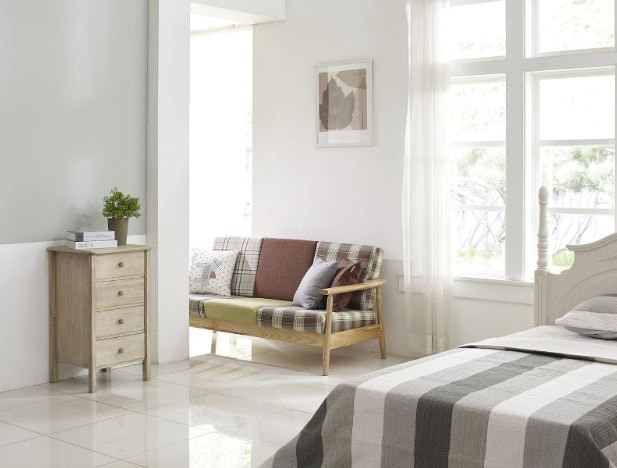A child’s room is more than just a sleeping area; it is a space where they play, learn, and experience vital developmental phases. As children grow and their interests evolve, it’s crucial to design a room that adapts to their changing needs. This adaptable design ensures space remains functional and supportive throughout their development, seamlessly integrating with the rest of the house or home.

This guide highlights essential aspects for designing adaptable spaces in your home for younger children: developmental stages, interests, personality, and flexible design. These principles ensure a child’s space that supports aesthetic appeal and growth, all within a home that evolves with your family.
A Room That Grows: Understanding Your Child’s Needs
When designing a child’s room, one must consider their unique needs and preferences. This includes understanding their developmental stage, interests, and personality.
Developmental Stages
Children go through various developmental stages, each with different needs and interests. For example, toddlers may need a safe and stimulating environment for play, while older children may require a space for homework and studying.
- Toddlers (1-3 years old): Prioritize safety and stimulation in their space. Incorporate soft play areas, age-appropriate toys, and ample storage for toys and belongings. Convertible cribs are a smart choice, as they can transition from a crib to a toddler bed and eventually to a full-size bed, adapting as your child grows.
- Preschoolers (3-5 years old): Encourage creativity and imagination during the toddler years. Provide a variety of art supplies, books, and dress-up clothes to transform their space into a hub for different activities. Pegboards can be used for hanging toys and easily rearranged to cater to changing interests. Incorporate accessories that inspire exploration and ensure the room is conducive to play and sleep.
- School-age children (6-12 years old): Design a room that balances learning and relaxation. Transform the space by incorporating a designated study area with a functional desk for homework and projects. Include comfortable seating for reading and explore creative storage solutions for school supplies. Raising furniture off the floor can create the illusion of a larger room, adding an element of fun. Opt for a desk that adjusts height to grow with your child, ensuring the room evolves with their needs.
- Teenagers (13-18 years old): As children’s preferences change rapidly during their teenage years, create a space that allows self-expression and privacy. Consider their style and interests when selecting decor and furniture to ensure the room remains functional and appealing. Encourage teenagers to add personal touches, such as a bulletin board for displaying their favorite photos and memorabilia. Built-in shelves provide valuable storage without sacrificing floor space, while multi-functional pieces can adapt to various themes and needs, supporting their growth and evolving interests throughout the design process.
Interests and Hobbies
Kids accumulate a lot of stuff over time. A child’s interests and hobbies can significantly influence their room design preferences. For example, a child who loves sports may want a room with sports-themed decor, while a child who loves to read may need a quiet reading nook that provides a sense of calm and functionality for different activities.
- Identify your child’s interests: What activities do they enjoy? What are their favorite hobbies or subjects? This exploration helps identify unique preferences.
- Incorporate interests into the design: Use color schemes, artwork, or furniture that reflects your child’s passions, ensuring the room functions well for their activities.
Personality
A child’s personality can also influence their room design preferences. For example, an extroverted child may prefer a bright and colorful room, while an introverted child may prefer a more calming and peaceful space.
- Consider your child’s personality traits: Are they outgoing, shy, creative, or organized?
- Choose design elements that complement their personality: For example, a bold and colorful room for an extroverted child, or a serene and minimalist room for an introverted child.
Design Elements for a Growing Room
Once you have a good understanding of your child’s needs, you can start to focus on the design elements of their room. Here are some key considerations:
Furniture
Choosing the right furniture is essential for a growing room. Opt for versatile pieces that can adapt to your child’s changing needs.
- Adjustable beds: Consider beds that can be adjusted in height as your child grows.
- Multi-functional furniture: Look for pieces that can serve multiple purposes, such as storage ottomans or desks that can be converted into tables. Under-bed boxes help utilize the space beneath the bed for storage.
- Durable materials: Choose furniture made from durable materials that can withstand the rigors of childhood. Rolling storage bins can keep toys and clothes out of sight under the bed.
Color Palette
A neutral color palette can create a versatile and timeless look that can be easily adapted as your child’s tastes change.
- Use neutral colors: Consider colors like white, cream, gray, and beige as a base for the room.
- Add pops of color: Introduce accent colors with accessories like rugs, curtains, or throw pillows.
A neutral wall serves as a perfect canvas for your child’s evolving interests, with cushions, throws, and posters featuring their latest obsessions. Soft shades like light greys, creams, or beiges provide a serene backdrop that allows vibrant accents to stand out. Introduce color through easily changeable elements such as bedding, rugs, artwork, and wall decals. Encourage your child to express their personality by selecting their favorite hues for decor that can be effortlessly updated.
Storage Solutions
Ample storage space is essential for keeping a child’s room organized. Consider creative storage ideas that can help keep clutter under control.
- Built-in storage: Incorporate built-in storage solutions like shelves, drawers, or closets, if possible.
- Modular storage: Opt for modular storage systems that can be easily rearranged and customized.
- Labeling: Use labels to help your child stay organized and find their belongings easily.
Lighting
Proper lighting is crucial for creating a comfortable and functional space. Consider both natural and artificial lighting options.
- Natural light: Maximize natural light by using curtains or blinds that can be easily adjusted.
- Artificial lighting: Install various lighting fixtures, such as overhead lights, bedside lamps, and task lighting for studying or reading.
Decor
Decorative elements can add personality and style to a child’s room. Choose pieces that can be easily updated as your child’s interests evolve.
- Wall art: Hang artwork that reflects your child’s interests or create a gallery wall with their favorite pictures.
- Rugs: Use rugs to add warmth, color, and texture to the room.
- Throw pillows and blankets: Introduce soft and cozy elements with throw pillows and blankets.
You can create a functional and stylish room by carefully selecting these design elements.
Incorporating Flexibility and Adaptability
A truly child-friendly room can adapt to their changing needs, from toddlerhood to teenage years.
Modular Design
Modular furniture and decor are excellent choices for a growing room. These pieces can be easily rearranged and customized to fit your child’s changing needs.
- Modular furniture: Consider modular beds, desks, or storage units that can be combined and reconfigured differently.
- Modular decor: Use modular shelves, wall organizers, or pegboards to create flexible storage and display options.
Future-Proofing
When designing your child’s room, consider their future needs and how the space can be adapted as they grow older.
- Growth Plan: Choose furniture and decor that accommodate your child’s increasing size and changing interests.
- Consider future use: As your child grows, so too should their room’s potential. Consider future uses, such as a teen retreat or a home office.
Budget-Friendly Options
Creating a flexible and adaptable room doesn’t have to be expensive. There are many budget-friendly options available.
- DIY projects: Consider DIY projects to personalize your child’s room without breaking the bank.
- Secondhand furniture: Look for quality secondhand furniture that can be upcycled or refurbished.
- Affordable decor: Use affordable decor items like posters, prints, or plants to add personality to the room.
By incorporating flexibility and adaptability into your child’s room design, you can create a space that will last for years to come.
Tips for Creating a Child-Friendly Space
In addition to the design elements discussed above, there are several other factors to consider when creating a child-friendly space.
Safety First
Safety is paramount when designing a child’s room. Ensure that all furniture and decor are safe for children and meet relevant safety standards.
- Use non-toxic materials: Choose furniture and decor made from non-toxic materials.
- Avoid sharp corners: Opt for furniture with rounded edges to prevent injuries.
- Secure furniture: Make sure furniture is securely anchored to the wall to prevent tipping.
Comfort and Coziness
A child’s room should be a comfortable and inviting space. Create a cozy atmosphere with soft textiles and comfortable seating.
- Use soft fabrics: Incorporate soft fabrics like plush rugs, cozy blankets, and comfortable pillows.
- Create a reading nook: Provide a comfortable spot for your child to relax and read.
Personalization
Encourage your child to personalize their room to make it feel unique and special.
- Incorporate their interests: Use decor elements that reflect your child’s passions.
- Create a gallery wall: Hang artwork or photos that your child loves.
- Allow for creativity: Give your child the opportunity to express their creativity through DIY projects or personalized decor.
By following these tips, you can create a child-friendly space that is safe, comfortable, and personalized.
Choosing a room design that grows with your child is a thoughtful and rewarding process. By considering your child’s needs, interests, and personality, you can create a space that will support their growth and development for years to come.
Remember to invest in safety, comfort, and personalization when designing your child’s room. With a little planning and creativity, you can create a space that your child will love and cherish. Explore different design options that stand the test of time and adapt to your child’s changing needs. This environment will not only be a sign of your thoughtful planning but also a cherished sanctuary for your child.
Looking for a home that can accommodate your growing family? HousingInteractive can help you find properties that will grow with your children. With our expertise and personalized service, we can assist you in finding the perfect home for your family’s needs. Visit our website or contact us today to learn more about how we can help.

























